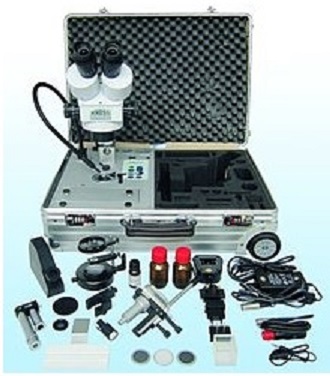Gemology or gemmology is the science dealing with natural and artificial gemstone materials. It is considered a geoscience and a branch of mineralogy. Some jewelers are academically trained gemologists and are qualified to identify and evaluate gems.Almas Gemologist are qualified to identify and evaluate gems using different kind of equipment and devices.

Over time even hard gemstones like sapphire can show wear. It does not shine like it did when you first got it. Gemstones as hard as Diamond can still chip and crack. Gemstone can be damaged in many ways. Most customers know that we can repair gold, silver, and even platinum jewelry. What most people forget about is repairing their damaged and worn gemstones.
our gemmology enable us to gain the highest level of professionally-recognised gemmological skills. Our gemmology involved gemmological theory and testing, diamond grading and gems valuation. With our fully-equipped gem lab, we are able to carry out a range of standard and advanced gemmological tests used in the identification of gemstones. We have the might to put gem materials under the microscope, from natural and synthetic gemstones through to imitation. We really enjoy studying on such a unique and specialised course, and find the different areas of study really interesting. We particularly like the diamond grading classes, and also the opportunity to handle so many different varieties of gemstones. Our staff team are all experts in the field, and have extensive industry experience.

It is often difficult to obtain an expert judgement from a neutral laboratory. Analysis and estimation in the gemstone trade usually have to take place on site. Almas use mobile laboratories, which pool all necessary instruments in a travel case which makes us independent from infrastructure. We are also enjoy gemological expeditions.
Gemstones are basically categorized based on their crystal structure, specific gravity, refractive index, and other optical properties, such as pleochroism. The physical property of "hardness" is defined by the non-linear Mohs scale of mineral hardness.
We study these factors while valuing or appraising cut and polished gemstones. Gemological microscopic study of the internal structure is used to determine whether a gem is synthetic or natural by revealing natural fluid inclusions or partially melted exogenous crystals that are evidence of heat treatment to enhance color.
The spectroscopic analysis of cut gemstones also allows a us to understand the atomic structure and identify its origin, which is a major factor in valuing a gemstone. For example, a ruby from Burma will have definite internal and optical activity variance from a Thai ruby.
When the gemstones are in a rough state, Almas studies the external structure; the host rock and mineral association; and natural and polished color. Initially, the stone is identified by its color, refractive index, optical character, specific gravity, and examination of internal characteristics under magnification.
Almas uses variety of tools and equipment which allow for the accurate tests to be performed in order to identify a gemstone by its specific characteristics and properties. These equipment include the following:
Gemological instruments
*Corrected 10 loupe
* Microscope
*Refractometer (include: Polarising filter, Magnifying eyepiece and Contact liquid for RI (refractive index) up to 1.81)
*Polariscope (include: Optic figure sphere)
*Dichroscope
* Spectroscope (handheld or desktop)
*Penlight
*Tweezers
*Stone cloth
*Color filter
*Immersion cell
*Ultraviolet lamp
General Identification of Gemstones and Industrial Stones
Gem identification is basically a process of elimination. Gemstones of similar color undergo non-destructive optical testing until there is only one possible identity. Any single test is indicative, only. For example, the specific gravity of ruby is 4.00, glass is 3.15 to 4.20, and cubic zirconia is 5.6 to 5.9. So we can easily tell the difference between cubic zirconia and the other two; however, there is overlap between ruby and glass. And, as with all naturally occurring materials, no two gems are identical. The geological environment they are created in influences the overall process so that although the basics can be identified, the presence of chemical "impurities" and substitutions along with structural imperfections create "individuals".
Identification by refractive indexWe uses Refractometer toe test so as to determine the gem's identity is to measure the refraction of light in the gem. Every material has a critical angle, above which point light is reflected back internally. This can be measured and thus used to determine the gem's identity. Typically this is measured using a refractometer, although it is possible to measure it using a microscope.
Identification by specific gravitySpecific gravity, also known as relative density, varies depending upon the chemical composition and crystal structure type. Heavy liquids with a known specific gravity are used to test loose gemstones. Specific gravity is measured by comparing the weight of the gem in air with the weight of the gem suspended in water.
Identification by spectroscopyThis method uses a similar principle to how a prism works to separate white light into its component colors. A gemological spectroscope is employed to analyze the selective absorption of light in the gem material. Essentially, when light passes from one medium to another, it bends. Blue light bends more than red light. How much the light bends will vary depending on the gem material. Coloring agents or chromophores show bands in the spectroscope and indicate which element is responsible for the gem's color.
Identification by inclusionsThe curvature observed in this synthetic color-change sapphire is due to a process known as the Verneuil Process or, flame fusion. During this process, a fine crushed material is heated at extremely high temperatures. The crushed material is then melted which drips through a furnace onto a boule. This boule where the corundum cools down and crystallizes, spins and thus causes the curved striations. Natural corundum does not form this way and lacks the curved striations. Inclusions can help us to determine whether or not a gemstone is natural, synthetic or treated (i.e. fracture-filled or heated).
At Almas we bring a fresh approach to the Gemstones market. Please contact us for more information about our services.